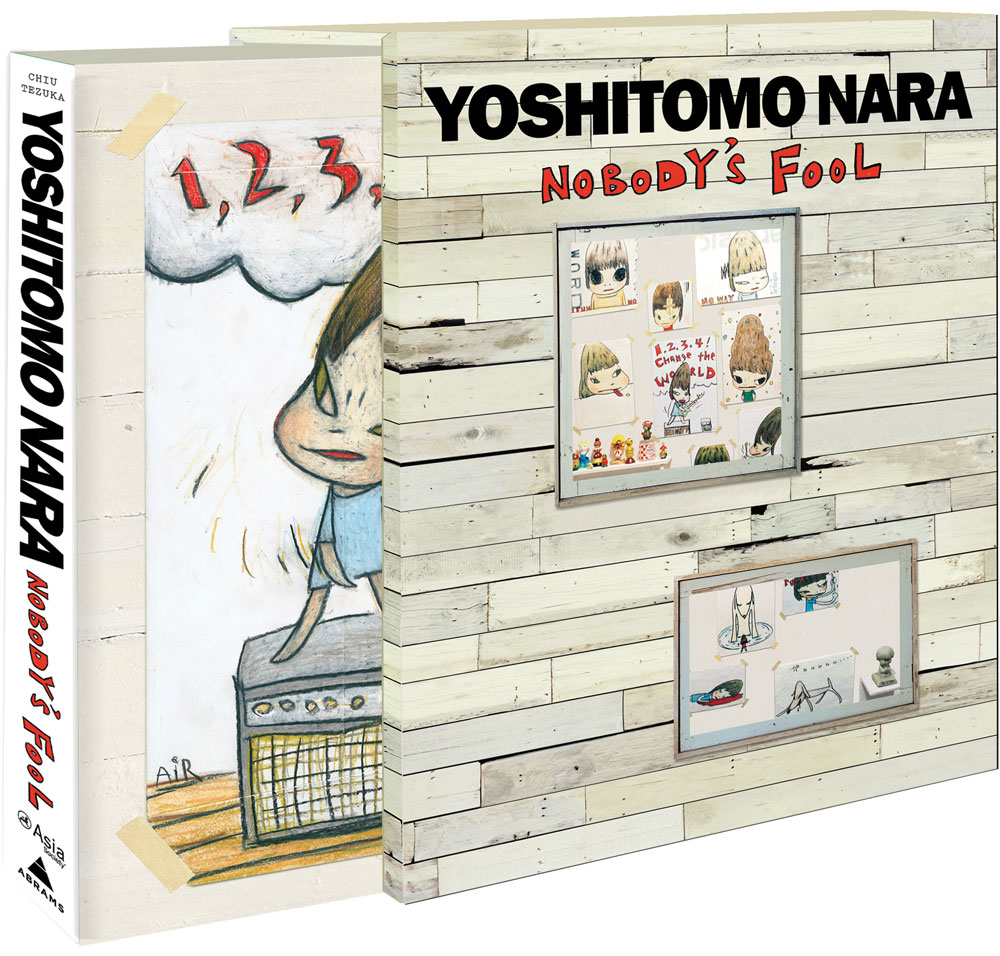Yoshitomo Nara’s Box Set

Yoshitomo Nara’s work has been the subject of museum and gallery exhibits internationally for over two decades, but he might be best known for his notorious 2009 arrest for tagging graffiti in the Union Square subway station—or for his merch. Nara has attached his images of sad-faced, weapon-wielding girls with eyes like saucers and adorably awkward white puppy dogs to t-shirts, tote bags, alarm clocks, and even a new limited edition Lance Armstrong Trek bicycle. For Nara’s fans–including a significant cult following of teen girls in Japan–his seemingly simple work speaks volumes about the isolation of Japanese adolescence, the challenges of rebellion, and the freedom that can only be found in really loud rock n’ roll.
Nara’s connection to youthful, rebellious music is the focus of an upcoming retrospective at the Asia Society, “Yoshitomo Nara: Nobody’s Fool,” named for Dan Penn’s 1973 soul album, the title of which also appears in several of Nara’s pieces. Nara and his collaborators will also set up an open studio at Park Avenue Armory preceding the exhibition, where they will build a large-scale installation. The retrospective’s accompanying catalog contains reproductions of paintings, sculptures and drawings, as well as critical essays, an interview by the exhibit’s co-curator Melissa Chui, and translations of Nara’s Japanese blog, in which he enthusiastically describes his early introduction to the Ramones and the Clash, gushes after a London Yo la Tengo concert, and muses on the importance of album covers (he has designed several).
Divided into four themed sections—”Isolation,” “Music,” “Rebellion,” and “Installations”–the book, like the exhibit, spans the entirety of Nara’s prolific career. Though Nara himself understands the value of his mass appeal and said, “I was made famous by the public, not the approval of critics,” the exhibit seeks to examine and explain his immense popularity, while looking beyond his art’s obvious cutesy charm.
In Japan, Nara’s pieces—his cartoonish girls, often captioned with ’70s punk lyrics—carry extra social weight that may be lost in translation elsewhere. His work gives a voice to a Japanese youth that is often silenced, reprimanded, or just plain ignored, and gives form to the national feelings of fear and helplessness following the Great Kansai Earthquake and the Tokyo Subway Gas Attack in 1995. “Nobody’s Fool,” which is the first time that the Asia Society will devote its entire space to one artist, attempts to reconcile Nara’s commercial success with his cultural importance, and to elevate the artist off the covers of teenage girls’ diaries and into art history.






